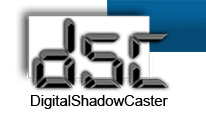
Intellectual Property (IP) Operations Systems (IPOS-DS) Implementation IPOS-DS has been conceived as a result of an intense and on-going analysis of the consequences of making modern web based technology available to most any individual in the context of the vast variety and quantity of User Created Content. As in the case of the creation of the printing press in its day, where unprecedented numbers of individuals obtained their own copies of literature, so too today’s technology provides unprecedented numbers of individuals with their own publishing platforms! Creation and worldwide distribution of content is now the domain of any individual. If one considers that just the top 1% of the most talented people in the world represents 60 to 70 million individuals of whom most if not all can obtain access to the digital network and if one considers the top 10% that number increases to 600 to y 700 million, one begins to understand the power and importance of IPOS-DS. DSC is about management of representations of value and IPOS-DS is about managing the most intimate value an individual can own his own creations and information. From the creation of great musical or literary works, films, compelling videos, documentaries, news event reports to family albums, personal correspondence, legal documents etc, all have value that needs to be managed by their proprietors according to their desires and more importantly their rights. Management of your own value in an IPOS-DS network is much more than just protecting against unauthorised use, it is about:
IPOS-DS Objectives IPOS-DS (Intellectual Property Operations System – Digital Shadow) is one of the many possible applications of the NetPortedItems’ DigitalShadowCaster suite of development tools. Its objective is to link digital representations of creations with other dependent creations and objects such as original manuscripts, adaptations, performances, editions etc.. collectively called Intellectual Property Entities or simply IP Entities. Representation of IP Entities is achieved using the DCIs a format developed by the Digital Media Project and based on MPEG-21 Digital Items. DCIs allow you to document the creations you wish to communicate across the network for others to use according to your terms and conditions. The IP Entities you will be able to represent using IPOS-DS are the following IPOS-ORs (Object Representations):
The relationship between these is illustrated in Fig. 1 below:
Fig. 1. Relationships between IPOS-ORs The arrows represent the dependencies of objects in child and parent relationships of IPOS-ORs. As can be seen an Instance is the child of either types of Manifestations (Work/Adaptation). To achieve this IPOS-DS saves for you the links between IPOS_ORs except of course in the case of a Work that has no parent. In order for you to perform operations over IPOS-ORs you need to assume a particular role. The roles defined so far are the following:
The types of Roles you can assume and the types of IPOS-ORs you can create under those roles is shown in Table 1 below.
Table 1. Roles vs IPOS-ORs.
As the table illustrates you need to assume the role of Instantiator in order to represent an interpretation (Instance) of even your own Work. The relationships between the IPOS-DS Roles and IPOS-ORs are according to the DMP Rights Represent Data Ontology.Full list of IPOS-DS features
IPOS-DS v1.0 is the first DSC Value Network Representation for any creator to communicate his Works and other creations with any user anywhere. Desktop IPOS is a Java-based user application devised for rendering the resources associated to some kind of IPOS-ORs, while ensuring the enforcement of the rights and conditions established in the license acquired by the user. Desktop IPOS downloads, decrypts and finally renders the resource in the user’s default application. It is needed for all users that attempt to access the resources associated to the IPOS-ORs. |
||||||||||||||||||||
